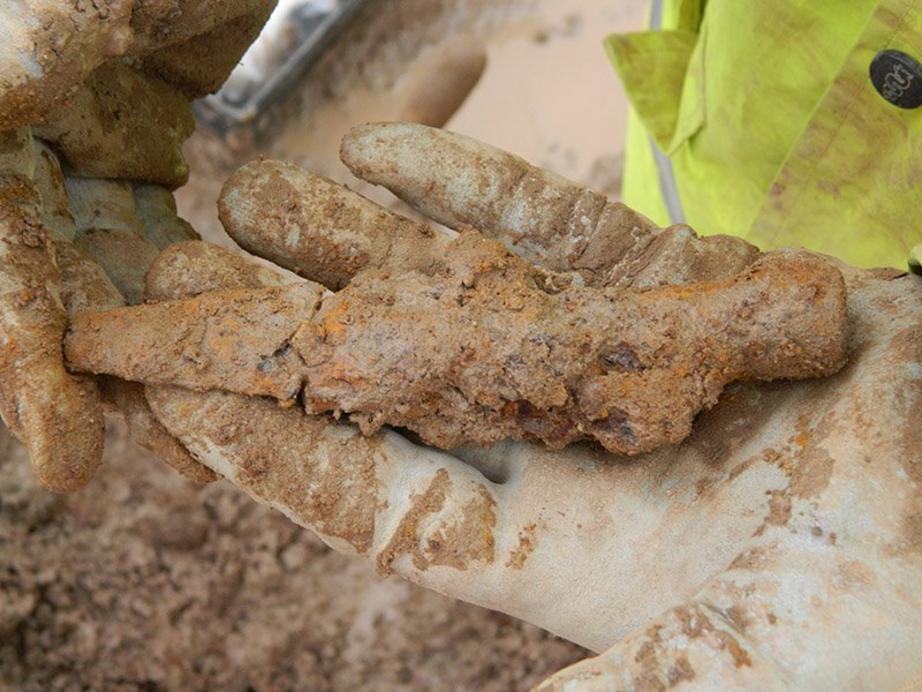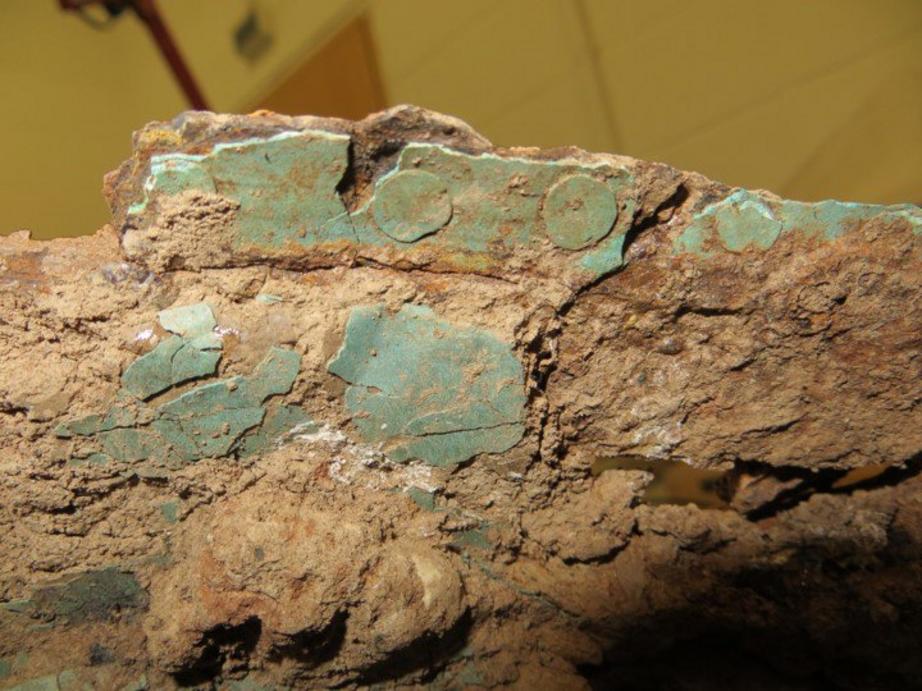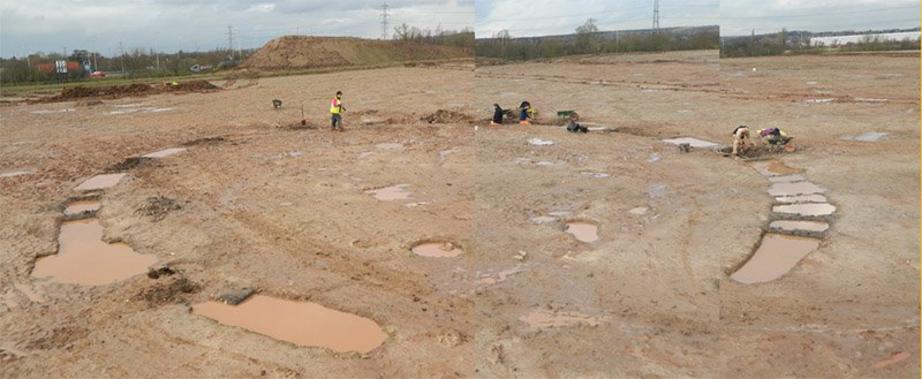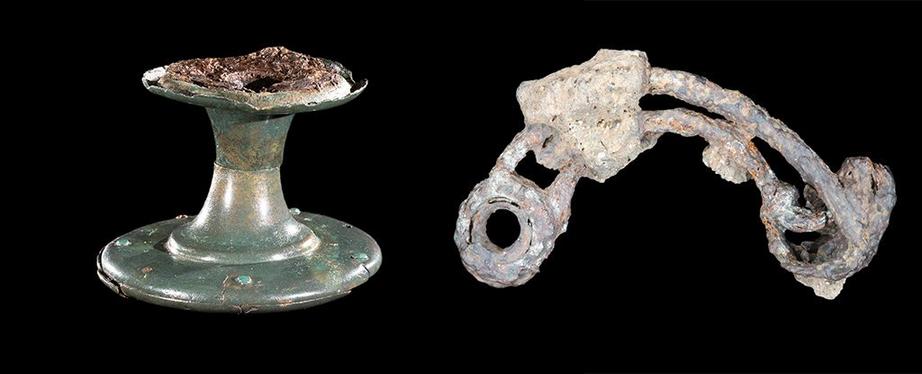A buried cache of 2,300 year-old iron age artefacts has been discovered in the UK
These things are incredible.
It's now the site of an upcoming large-scale warehouse development, but 2,300 years ago, a patch of land in the UK was where Iron Age settlers held community ceremonies and feasts.
Archaeologists have unearthed a unique collection of metal artefacts at a site in Leicestershire, and some of those objects are one-of-a-kind discoveries for the entire region.
While excavating the site known as Glenfield Park, archaeologists found extremely rare decorated cauldrons along with dress pins, a brooch, a metal object that may have been the cap of a ceremonial staff, and a sword.
The dazzling bounty indicates long-term settlement over generations, and the evolution of the site from modest dwellings to communal feasting.
"Glenfield Park is an exceptional archaeological site, with a fantastic array of finds that highlight this as one of the more important discoveries of recent years," said dig director John Thomas of the University of Leicester.
 An iron spearhead just after it was discovered
An iron spearhead just after it was discovered
Archaeologists had known about the site since the early 1990s, when a smaller excavation took place in preparation for laying a road.
Field walks at the time indicated that there was much more to be found; but it wasn't until 2013 that a wider survey was commissioned in advance of the construction of a large warehouse and distribution centre.
What they found was extraordinary: a multi-generation Iron Age settlement across an area of around 12 hectares, with a dense concentration of around 4 hectares of settlement remains, lasting several centuries.
Early settlement of the site was from around the 5th of 4th century BCE, but radiocarbon dating of the artefacts shows that, by the 4th or 3rd century BCE, the character of the village had changed. Roundhouses became enclosed, and the culture became more material.
"It is the metalwork assemblage that really sets this settlement apart. The quantity and quality of the finds far outshines most of the other contemporary assemblages from the area, and its composition is almost unparalleled," Thomas said.
"The cauldron assemblage in particular makes this a nationally important discovery. They represent the most northerly discovery of such objects on mainland Britain and the only find of this type of cauldron in the East Midlands."
The cauldrons range in size, and were made from separate parts, with iron rings and iron bands, iron handles, and copper alloy bowls.
Because they were so fragile, they had to be lifted out in soil blocks and analysed using CT scanning, which also revealed stem and leaf motifs on one of the iron bands, similar to the "Vegetal" style of Celtic art, and a domed rivet or raised boss on one of the copper bowls.
 Cauldron bowl attached to iron band
Cauldron bowl attached to iron band
In all, their total capacity was around 550 litres (580 quarts).
Eight of the cauldrons appeared to have been deliberately placed in a circular ditch enclosure that surrounded one of the buildings on the site, prior to the ditch being filled in.
This suggests, the researchers said, that they were deliberately buried to mark the cessation of activities associated with that part of the site.
 The cauldron enclosure
The cauldron enclosure
The burial of three other cauldrons in different locations indicates that, over time, several significant occasions were marked in this way.
"Due to their large capacity it is thought that Iron Age cauldrons were reserved for special occasions and would have been important social objects, forming the centrepiece of major feasts, perhaps in association with large gatherings and events," Thomas said.
"The importance of cauldrons as symbolic objects is reflected in their frequent appearance in early medieval Irish and Welsh literature, which has been drawn upon in studies of Iron Age society.
"They are rarely found in large numbers and, with the exception of a discovery in Chiseldon, where 17 cauldrons were found in a pit, there have been few excavated examples in recent years."
Further details about the artefacts will require careful excavation from the soil blocks, a process that's expected to take around two to three years by a team at Museum of London Archaeology.
The results of the team's work so far will be published in the December 6 edition of British Archaeology.

